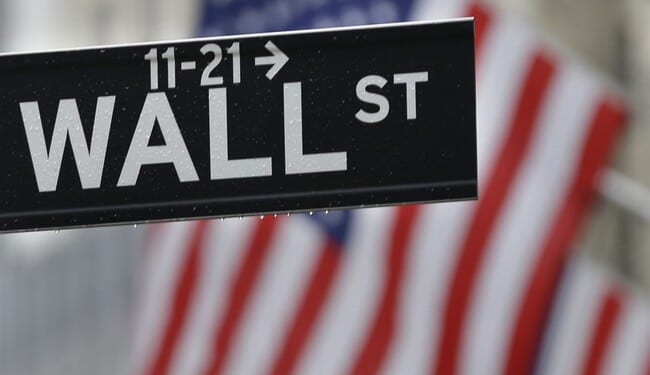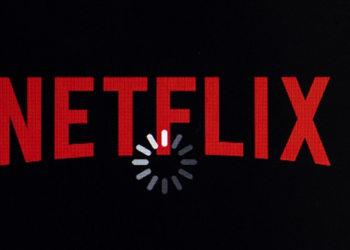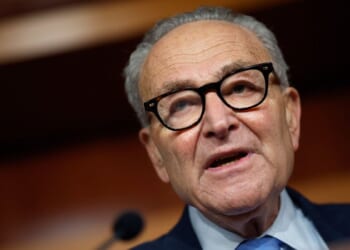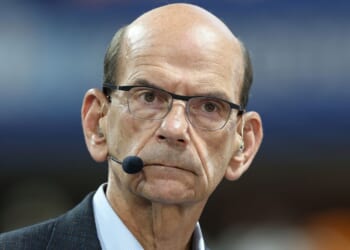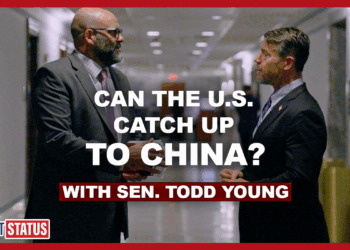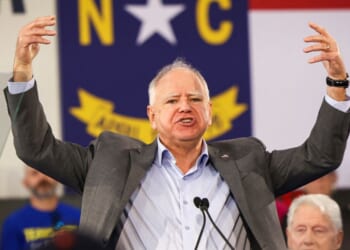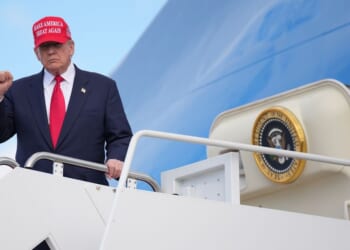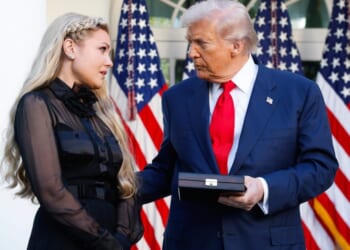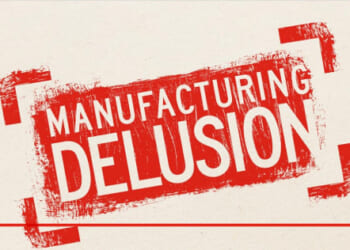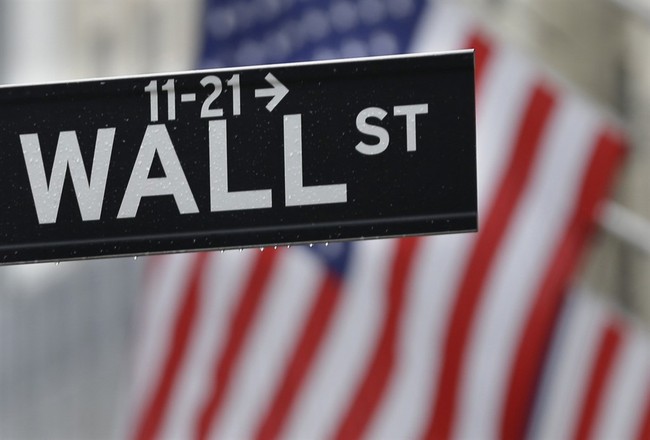
The Beating Heart of America’s Economy
New York City isn’t a dot on the map, a skyline, or the city that never sleeps; it’s the pulse of American capital, commerce, and conversation.
Roughly 10% of U.S. GDP is generated by its metro areas; in 2023, that amounted to around $2.3 trillion.
If the city were a nation, its economy would rival those of France or the United Kingdom, factoring in trade, finance, tourism, tech, and media. The city’s influence casts a shadow on nearly every paycheck and portfolio in America.
There’s no light between Wall Street and Main Street. Together, the New York Stock Exchange and Nasdaq represent over $60 trillion in listed market value, which is the nest egg behind millions of Americans’ retirements and investments.
Markets in Des Moines move when the opening bell rings in Manhattan. New York City doesn’t just measure American prosperity; it defines it.
As all national media focus on the New York City mayoral race, I keep asking myself, “Why should I give a tinker’s damn about what happens?”
Why New York City Matters
Even if you’ve never set foot in Times Square or watched the yellow cab you flagged drive by, New York touches every part of our lives: our pump price, the value of our retirement accounts, and the pace of the national conversation; all match the rhythm of the city’s heartbeat.
If Wall Street wobbles, so do our savings, and while eating dinner, we end up arguing about what media moguls decide today’s news. When the city prospers, so do all downstream markets that fund our factories, farms, and small businesses.
New York isn’t simply another city; it’s the amplification of America. When it triumphs, we’re lifted; and its leadership often becomes the blueprint, good or bad, for the rest of the country.
Whether we like it or not, we’re all connected to that patch of concrete and steel, and if New York sneezes, the rest of us are left wiping our faces.
Where Commerce Meets the World
In a typical half-year, over 4 million shipping containers are moved from the Port of New York and New Jersey, keeping shelves stocked from Boston to Santa Fe.
Although the mayor’s office doesn’t have a direct connection to every cargo ship, local zoning, infrastructure, and environmental decisions ripple across national supply chains. Inflation doesn’t wait for permission when congestion hits the harbor.
It’s the same for tourism: More than 60 million people visit New York City each year, spending about $50 billion that fuels airlines, restaurants, and hotels across the nation.
Broadway, Times Square, and Central Park aren’t just pictures on postcards; they’re economic multipliers helping to set America’s service economy in motion.
The Mind of the Nation
So much of America’s debate at breakfast begins with editorial meetings in Manhattan, where the legacy three broadcast networks call home, as do the New York Times and Fox News.
It’s the city’s newsrooms that decide which stories echo across cable screens, car radios, and social feeds. Whoever commands that stage operates the loudest amplifier in the country, helping frame the nation’s narrative.
New York, however, isn’t just where stories are told; it’s where they’re tested. From 9/11 to COVID, and from financial booms to blackouts, the city has become America’s real-time experiment in resilience. Things that happen on its streets often become a predictor of what happens everywhere else, just louder and with higher rent.
The Mayor’s Chair: More Than a City Job
Running New York City isn’t just a local gig; it’s a nationwide stewardship disguised as municipal management. The city’s annual budget of around $112 billion is larger than that of 46 U.S. states. The mayor oversees the country’s largest public school system and police department, each with budgets rivaling entire regions.
Cautionary tales for the rest of America are born from policy changes made in City Hall on safety, education, housing, and taxation. This influence extends well beyond the five boroughs. When New York changes course, other cities either need to follow suit or brace for impact.
These are the reasons why every New York City mayoral race turns into a national story. The office sits in City Hall with a reach that runs straight into the nation’s bloodstream.
The 2025 Mayoral Race: A Crossroads for the Capital of Capital
We’ve seen races like the 2025 run for mayor before, pitting the radical against the familiar, and the establishment against the insurgent.
On one side stands Andrew Cuomo, the former New York governor who’s seeking to recapture power in the state he once led.
Zohran Mamdani sits on the other side. Mamdani is a 33-year-old state assemblyman from Queens, son of Indian immigrants who fled Uganda. He describes himself as a democratic socialist.
Mandani is running on a socialist’s dream platform: rent freezes, city-run grocery stores, fare-free transit, a minimum wage of $30, and a ten-year plan to build 200,000 “social housing” units under public ownership.
Although critics warn that his proposals would shrink the city’s tax base, Mamdani leads in the tightening polls despite red flags about burdening small businesses and discouraging private investment. Like a shadow, controversy follows him: his criticism of Israel and alliances with far-left groups sharpen the national spotlight.
Once respected for his tenures in Albany, Cuomo now fights to shake off scandal and senior leadership baggage. He’s bidding to represent the establishment’s attempt to reclaim the narrative of a city shifting under pressure.
With Mamdani’s upset primary victory behind him, city residents are being asked not just “who will run the city,” but “what kind of city will America’s engine room become?”
What Might Happen if a Socialist Takes the Reins
New York could shift from a market magnet to a redistribution laboratory if Mamdani wins. His agenda would push the government from regulator to operator, expanding rent control, social housing, and public ownership. Spending would skyrocket while an already fragile tax base, from outmigration and high costs, would struggle to keep up.
His administration would trigger a chain of events: corporate investors would reassess their footprint, developers might pause projects or move them to friendlier tax climates, and banks, insurers, and tech firms could quietly shift operations to other hubs. When economics drag in New York, it rarely stays put, rippling through national markets, municipal bonds, and housing indexes.
Mandani is proposing to reshape public safety by shifting parts of the NYPD’s duties to a new “Department of Community Safety” that handles homelessness, traffic, and mental health crises. His supporters call it compassionate reform, while his opponents call it a replay of failed experiments that once turned neighborhoods into open-air crime labs.
A socialist mayor in America’s financial capital wouldn’t just alter policy; it would rewrite perception. Progressives across the country would treat it as validation; investors a cautionary tale.
Either way, the outcome could reset the balance between private enterprise and government control, nationwide.
A City That Never Stops Echoing
Even diplomacy, the language of bureaucrats, flows through Manhattan. The United Nations stands on the East River, converting the city into a crossroads of global power. Traffic stalls when foreign ministers gather there, but so does policy. It’s that proximity that gives America leverage; every international crisis eventually lands within a cab ride of Wall Street.
New York is the lens through which the world sees American vitality or dysfunction; national confidence rises when the city prospers, and investors, travelers, and allies all take notice when it falters.
Therefore, the mayor isn’t simply a local executive; whoever holds that office becomes a measure of how well America manages scale, diversity, and ambition without losing its footing.
Final Thoughts
For better or worse, America’s flagship remains New York City, powered by pressure, competition, and ambition, elements that build the republic itself.
Stretching far beyond borough boundaries, the stakes of its mayoral race influence markets, morale, and national direction.
I can’t speak for everybody else, but I roll my eyes at the elitist New Yorkers. Each morning, I wake up, see how the city’s clock wakes the country, read headlines across PJ Media, and watch how its economy affects trade.
If we ignore it, then we ignore the pulse of the nation.
At PJ Media, we break down the power structures that shape real America—from Wall Street’s trading floors to City Hall’s backrooms. Our team calls out the hypocrisy, tracks the money, and digs into the stories the legacy networks won’t. Join PJ Media VIP today to support fearless, independent journalism and unlock exclusive commentary you won’t find anywhere else. Subscribe and help keep the lights on for the writers who still believe truth shouldn’t come with a disclaimer. Use promo code POTUS47 for 74% off your VIP membership.

